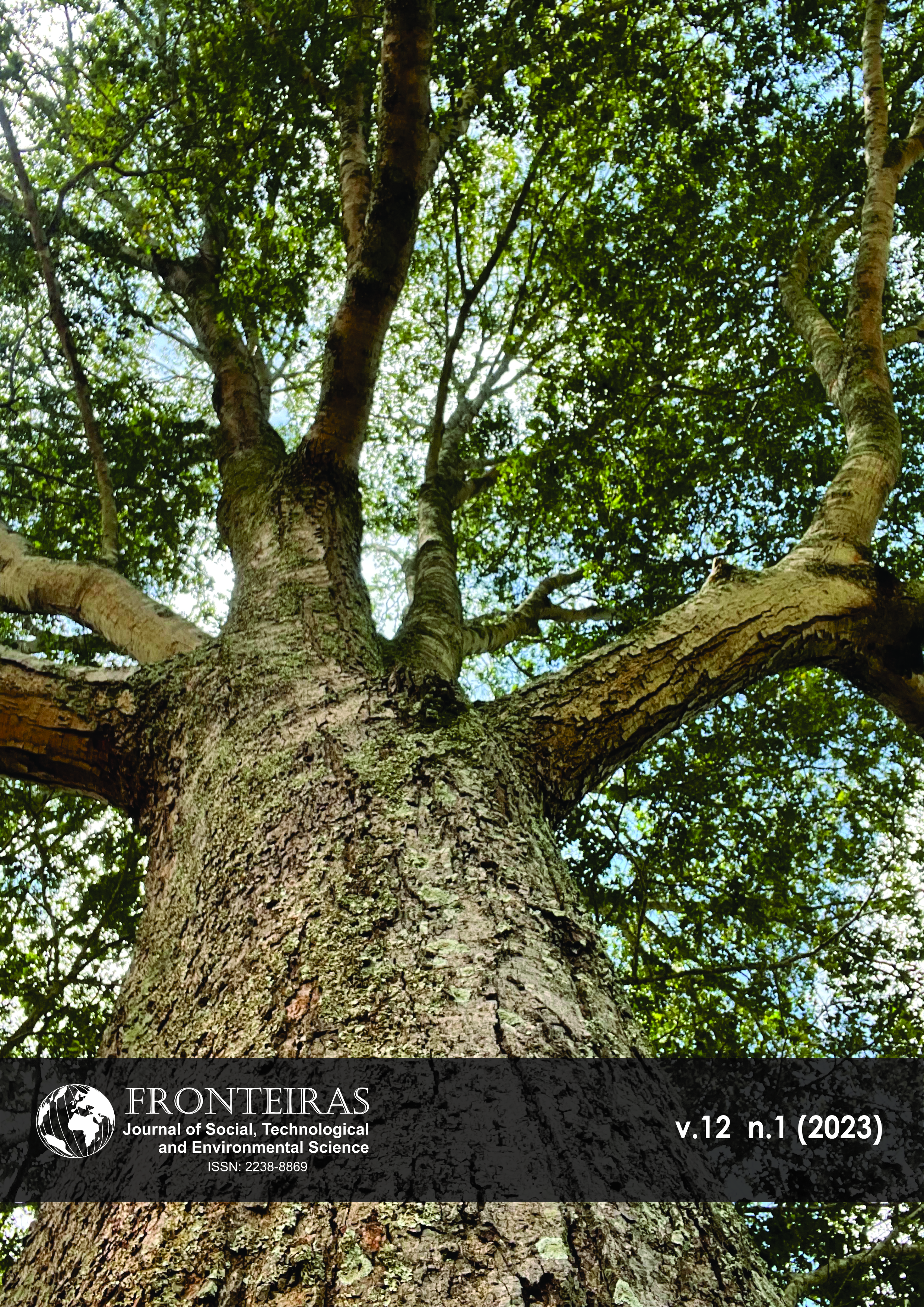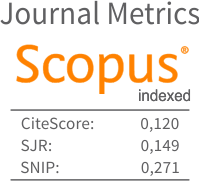Ora-Pro-Nóbis: Na Mesa uma Opção Saudável e no Campo uma Fonte de Renda
DOI:
https://doi.org/10.21664/2238-8869.2023v12i1.p154-164Palavras-chave:
pereskia spp., planta alimentícia não convencional, alimentação, sustentabilidadeResumo
A utilização da ora-pro-nóbis é uma opção viável para tornar mais saudável a alimentação das pessoas. Ao consumi-la também cria-se a oportunidade da geração renda ao homem do campo, o qual pode trabalhar de forma agroecológica e sustentável na produção de alimentos. Ante ao exposto, esse trabalho buscou-se saber por meio da aplicação de um questionário via Google Forms, qual a percepção da população acerca das PANCs, mais especificamente da ora-pro-nóbis, uma planta multifuncional à alimentação humana. O questionário semiestruturado foi aplicado de 19/09/2022 a 15/10/2022, compreendendo 14 perguntas fechadas e duas abertas (sendo uma sobre a sua ocupação e a outra acerca da opinião sobre o tema). No período de 26 dias de disponibilidade do questionário on-line houve a participação de 102 respondentes, compreendendo um perfil sociodemográfico feminino de 48% e masculino de 52%. A faixa etária predominante situou-se entre 19 e 40 anos (35 pessoas), com maior representatividade da Região Sudeste (98 pessoas), de área urbana e escolaridade de todos os níveis, sendo predominante o de nível superior completo (48 pessoas). A pesquisa demonstrou que a percepção sobre as PANCs compreende 79% dos respondentes. Entretanto, o consumo ainda não é expressivo, já que 54% não as consomem. Quanto à ora-pro-nóbis, mesmo alguns dos respondentes não sabendo do que se tratava o termo PANCs, a planta era conhecida por 81% dos entrevistados. Ao aumentar a inserção da ora-pro-nóbis na sociedade brasileira, permitir-se-á ao agricultor ter uma nova opção de fonte de renda, diminuindo a sua vulnerabilidade à sazonalidade peculiar de cada cultura cultivada.
Referências
ATLAS.TI. ATLAS.ti | The Qualitative Data Analysis & Research Software. Nova Scotia-CAScientific Software Development GmbH, , 2022. Disponível em: https://atlasti.com/pt. Acesso em: 21 out. 2022.Windows
COSTA, B. R. L. Bola de Neve Virtual: O Uso das Redes Sociais Virtuais no Processo de Coleta de Dados de uma Pesquisa Científica. Revista Interdisciplinar de Gestão Social, v. 7, n. 1, p. 15–37, 2018. Disponível em: https://periodicos.ufba.br/index.php/rigs/article/view/24649. Acesso em: 3 ago. 2022.
ESTEVAN, D. A.; WEISS, E. C.; LIMA, D. M. de; AMARAL, A. Q. PLANTAS ALIMENTÍCIAS NÃO CONVENCIONAIS NA EDUCAÇÃO AMBIENTAL: UMA REFLEXÃO SOBRE CONSUMISMO E SOBERANIA ALIMENTAR. Educação Ambiental em Ação, v. 21, n. 80, 2022. Disponível em: http://www.revistaea.org/logo_fb.png. Acesso em: 29 out. 2022.
GARCIA, J. A. A.; CORRÊA, R. C. G.; BARROS, L.; PEREIRA, C.; ABREU, R. M. V.; ALVES, M. J.; CALHELHA, R. C.; BRACHT, A.; PERALTA, R. M.; FERREIRA, I. C. F. R. Phytochemical profile and biological activities of “Ora-pro-nobis” leaves (Pereskia aculeata Miller), an underexploited superfood from the Brazilian Atlantic Forest. Food Chemistry, v. 294, p. 302–308, 2019. Disponível em: https://doi.org/10.1016/j.foodchem.2019.05.074. Acesso em: 25 out. 2022.
KINUPP, V. F.; BARROS, I. B. I. de. Riqueza de Plantas Alimentícias Não-Convencionais na Região Metropolitana de Porto Alegre, Rio Grande do Sul. Revista Brasileira de Biociências, v. 5, n. S1, p. 63–65, 2007. Disponível em: http://www.ufrgs.br/seerbio/ojs/index.php/rbb/article/view/92. Acesso em: 25 out. 2022.
MACIEL, K. F. K.; FUENTES-GUEVARA, M. D.; GONÇALVES, C. da S.; MENDES, P. M.; SOUZA, E. G. de; CORRÊA, L. B. Mobile mandala garden as a tool of environmental education in an early childhood school in Southern Brazil. Journal of Cleaner Production, v. 331, p. 129913, 2022. Disponível em: https://doi.org/10.1016/j.jclepro.2021.129913. Acesso em: 25 out. 2022.
MADEIRA, N. R.; AMARO, G. B.; MELO, R. A. C.; BOTREL, N.; ROCHINSKI, E. Cultivo de Ora-pro-nóbis (Pereskia) em plantio adensado sob manejo de colheitas sucessivas. - Portal Embrapa: Circular Técnica 156. Brasília-DF: Embrapa Hortaliças, 2016. Disponível em: https://www.embrapa.br/busca-de-publicacoes/-/publicacao/1066888/cultivo-de-ora-pro-nobis-pereskia-em-plantio-adensado-sob-manejo-de-colheitas-sucessivas. Acesso em: 29 out. 2022.
MARIUTTI, L. R. B.; REBELO, K. S.; BISCONSIN-JUNIOR, A.; DE MORAIS, J. S.; MAGNANI, M.; MALDONADE, I. R.; MADEIRA, N. R.; TIENGO, A.; MARÓSTICA, M. R.; CAZARIN, C. B. B. The use of alternative food sources to improve health and guarantee access and food intake. Food Research International, v. 149, p. 110709, 2021. Disponível em: https://doi.org/10.1016/j.foodres.2021.110709. Acesso em: 25 out. 2022.
ONU. Objetivos de Desenvolvimento Sustentável. [s. l.], 2022. Disponível em: https://brasil.un.org/pt-br/sdgs. Acesso em: 28 jul. 2022.
PETROPOULOS, S. A.; FERREIRA, I. C. F. R.; BARROS, L. Phytochemicals in Vegetables: A Valuable Source of Bioactive Compounds. [S. l.]: Bentham Science Publishers, 2018.
PINTO, C. M. F.; PINTO, C. L. O.; SOUZA, M. R. M. de; PEREIRA, M. L. IMPLANTAÇÃO DE UMA UNIDADE DEMONSTRATIVA DE HORTA AGROECOLÓGICA, EM PEQUENO ESPAÇO NA EPAMIG SUDESTE. In: AGROECOLOGIA: MÉTODOS E TÉCNICAS PARA UMA AGRICULTURA SUSTENTÁVEL -. [S. l.]: Editora Científica Digital, 2021. v. 5, p. 154–161. E-book. Disponível em: http://www.editoracientifica.com.br/artigos/implantacao-de-uma-unidade-demonstrativa-de-horta-agroecologica-em-pequeno-espaco-na-epamig-sudeste. Acesso em: 21 out. 2022.
RANIERI, G. H. Guia prático sobre PANCs: plantas alimentícias não convencionais. 1. ed. São Paulo - SP: Instituto Kairós, 2017.
SARTORI, V. C.; THEODORO, H.; MINELLO, L. V.; PANSERA, M. R.; BASSO, A.; SCUR, L. (org.). Plantas Alimentícias Não Convencionais – PANC: resgatando a soberania alimentar e nutricional. Caxias do Sul-RS: EDUCS Acadêmico, 2020.
SIMONETTI, M. G.; FARIÑA, L. O. de; SIMONETTI, K. T. G. As potencialidades da ora-pro-nóbis (Pereskia aculeata Mill.) no Programa Nacional de Alimentação Escolar. Research, Society and Development, v. 10, n. 14, p. e424101420381–e424101420381, 2021. Disponível em: https://doi.org/10.33448/rsd-v10i14.20381. Acesso em: 21 out. 2022.
SOUZA, M. R. de M.; PEREIRA, P. R. G.; PEREIRA, R. G. F.; BARBOSA, I. de P.; BARACAT-PEREIRA, M. C. Protein yield and mineral contents in Pereskia aculeata under high-density planting system. Pesquisa Agropecuária Tropical, v. 50, 2020. Disponível em: https://doi.org/10.1590/1983-40632020v5062365. Acesso em: 26 out. 2022.
VIJAYABLAN, S.; CHIGURUPATI, S.; ALHOWAIL, A.; DAS, S. A Retrospective Review of Pereskia Bleo (Kunth) DC on its Properties and Preclinical Insights for Future Drug Discovery Trends. Annals of the Romanian Society for Cell Biology, v. 25, n. 4, p. 2123–2132, 2021. Disponível em: https://www.annalsofrscb.ro/index.php/journal/article/view/2744. Acesso em: 29 out. 2022.
YIN, R. K. Pesquisa Qualitativa do Início ao Fim. 1a edição ed. Porto Alegre: Penso, 2016.
ZACHARIAS, A. O.; CARVALHO, H. M. G.; MADEIRA, N. R. Hortaliças PANC - Segurança Alimentar e Nicho de Mercado: Inteligência estratégia para pequenos negócios rurais: agregação de valor e tecnologia executado pela Embrapa e Sebrae Nacional. Brasília-DF: Embrapa│Sebrae, 2021. Disponível em: https://www.embrapa.br/documents/10180/46878777/Guia+de+Neg%C3%B3cio+-+Sistema+de+Produ%C3%A7%C3%A3o+de+Hortali%C3%A7as+PANCs/8eb89efd-b781-9373-28cf-858faa6bff64. Acesso em: 26 out. 2022.
Downloads
Publicado
Como Citar
Edição
Seção
Licença
Esta revista oferece acesso livre imediato ao seu conteúdo, seguindo o princípio de que disponibilizar gratuitamente o conhecimento científico ao público proporciona maior democratização mundial do conhecimento.
A partir da publicação realizada na revista os autores possuem copyright e direitos de publicação de seus artigos sem restrições.
A Revista Fronteiras: Journal of Social, Technological and Environmental Science segue os preceitos legais da licença Creative Commons - Atribuição-NãoComercial 4.0 Internacional.


